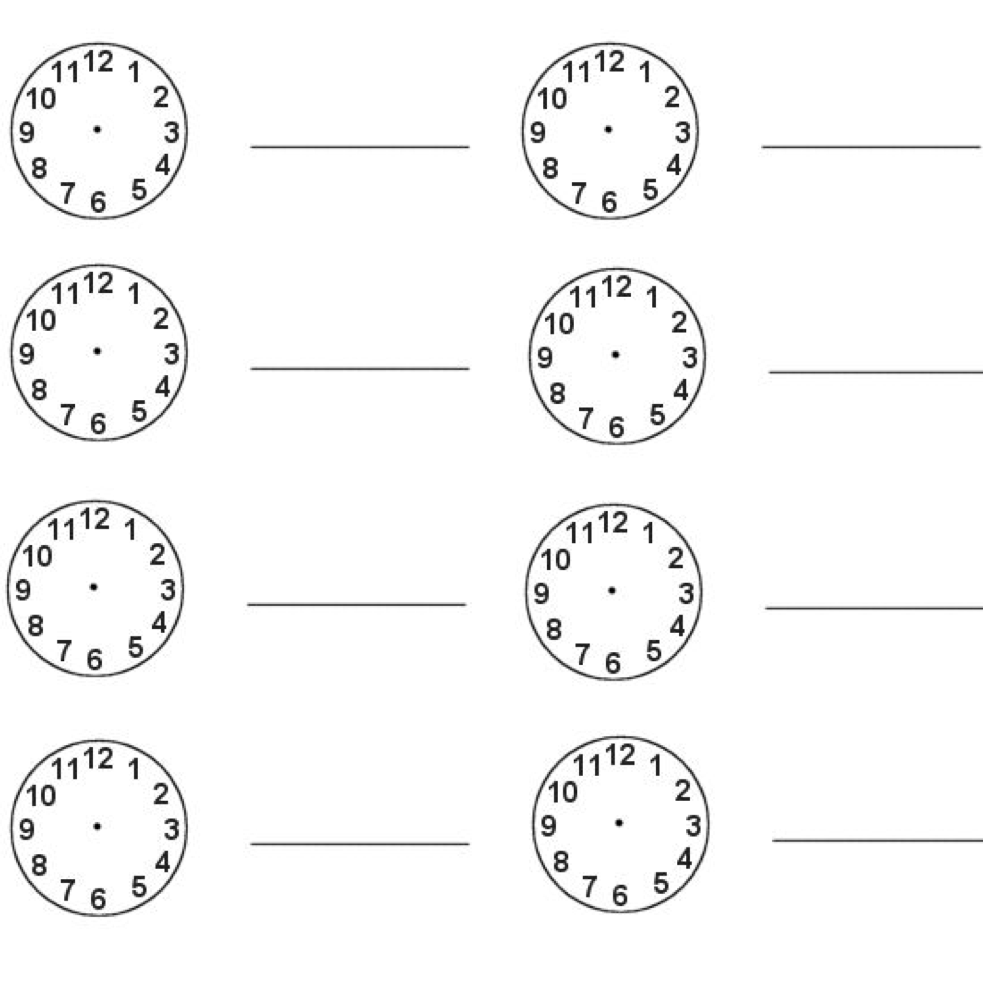Topic 5 Numbers
Los números y la hora
Números Numbers
| 0 cero | |||
| 1 uno | 11 once | *21 veintiuno | 31 treinta y uno |
| 2 dos | 12 doce | 22 veintidós | 32 treinta y dos |
| 3 tres | 13 trece | 23 veintitrés | 33 treinta y tres |
| 4 cuatro | 14 catorce | 24 veinticuatro | 34 treinta y cuatro |
| 5 cinco | 15 quince | 25 veinticinco | 35 treinta y cinco |
| 6 seis | 16 dieciséis | 26 veintiséis | 36 treinta y seis |
| 7 siete | 17 diecisiete | 27 veintisiete | 37 treinta y siete |
| 8 ocho | 18 dieciocho | 28 veintiocho | 38 treinta y ocho |
| 9 nueve | 19 diecinueve | 29 veintinueve | 39 treinta y nueve |
| 10 diez | 20 veinte | 30 treinta |
50 cincuenta,
60 sesenta,
70 setenta,
80 ochenta y
90 noventa
40 through 90 are written using two words just like 30. So…
48 would be cuarenta y ocho.
73 would be setenta y tres.
92 would be noventa y dos.
Remember to use “y”
There are two common ways to identify numbers:
- Cardinal numbers, to express numbers such as the list above
- There are three books on the table
- Ordinal numbers, to express order.
- John is third on the line
We will study ordinal numbers in Chapter 2.
If the cardinal number 21 veintiúno is followed by a masculine noun such as; 21 libros, 21 años, 21 carros, the o is eliminated and becomes veintiún.
Practícalo…
Tengo 21 años.
El mes de septiembre tiene 30 días.
El año tiene 52 semanas.
Un día tiene 24 horas.
Una hora tiene 60 segundos.
Escríbelo…
Los números en tu vida Numbers in your life.
Fill in the blanks in a Word document or a page of notebook paper.
Número de teléfono _____________________________________
Número de la casa (house) _______________________________
Número del código (code) postal _______________________________
Número del código de área ___________________________________
Número de la licencia de manejar (driver’s license) _______________________________
La Hora The time
¿Qué hora es?
Is used to ask What time is it?
All times begin with Son las…
Except for Es la una…
En punto (on the dot) O’clock
|
1:00
|
Es la una (en punto) |
|
2:00
|
Son las dos…tres…cuatro…and so on |
To express a time after the hour, state the hour and add the letter “y”, then the minutes
|
1:20
Es la una y veinte. |
2:15
Son las dos y quince. |
4:19
Son las cuatro y diecinueve. |
Also…
|
1:15
Es la una y cuarto/quince. |
2:30
Son las dos y media/treinta. |
4:45
Son las cuatro menos cuatro. |
Como expresar la hora…
|
Son las siete de la mañana (7:00 A.M.) Es la una de la tarde (1:00 P.M.) Son las ocho de la noche (8:00 P.M.) Son las doce de la medianoche (12:00 A.M.) Son las doce del mediodia (12:00) P.M. |
¿A qué hora es la clase de español? (to tell at what time something happens)
1:00 P.M. Es a la una de la tarde.
2:15 P.M. Es a las dos y quince de la tarde.
Practícalo
Listen as your instructor says a time of the day. Draw the in the clock and then write in full sentences in Spanish.

Escríbelo
Use a la o a las to answer the following questions.
Fill in the blanks in a Word Doc. or a page of notebook paper.
- ¿A qué hora es la clase de español? ____________________________________
- ¿A qué hora almuerzas (have lunch)? ____________________________________
- ¿A qué hora estudias (you study)? ______________________________________
- ¿A qué hora llegas a casa (arrive home)? _______________________________
Úsalo
A. Work with a classmate and express the time in full sentences.
- 6:48 A.M.
- 1:17 P.M.
- 9:33 A.M.
- 5:15 P.M.
B. Ask a classmate at what time the following events take place.
- La fiesta (8:00 P.M.)
- La clase de español (3:05 P.M.)
- La siesta (12:00 P.M.)

